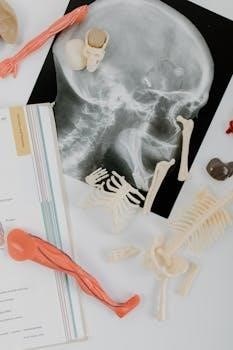Canic Math 53 Final 2019 PDF⁚ A Comprehensive Overview
Canic Math 53 Final 2019 PDF offers comprehensive insights into UC Berkeley’s Math 53 course‚ focusing on Professor Canic’s final exam in 2019. This resource includes details of exam structure and content. Students can review past papers for preparation‚ and understand the professor’s teaching style.
General Information about Math 53 at UC Berkeley
Math 53‚ a core mathematics course at UC Berkeley‚ covers multivariable calculus‚ linear algebra‚ and differential equations. The curriculum typically includes vector calculus‚ partial derivatives‚ multiple integrals‚ and an introduction to linear algebra concepts. This course is crucial for students pursuing degrees in engineering‚ physics‚ and other STEM fields‚ providing a solid foundation in mathematical principles.
The course structure usually involves lectures‚ discussion sections‚ and problem sets. Lectures introduce the theoretical concepts‚ while discussion sections offer opportunities for students to work through problems and clarify doubts with teaching assistants. Regular assignments and quizzes reinforce understanding‚ and midterm and final exams assess students’ mastery of the material.
UC Berkeley’s Math 53 aims to equip students with the analytical and problem-solving skills necessary for advanced studies. Resources like Berkeleytime and Course Hero offer additional support‚ including past exams and study materials. Understanding the grading policies‚ including curve adjustments‚ is essential for students to gauge their performance; The course is rigorous‚ but it’s an important stepping stone for academic and career advancement in quantitative fields.
Professor Suncica Canic’s Teaching Style
Professor Suncica Canic is known for her rigorous and engaging approach to teaching Math 53 at UC Berkeley. Students often describe her lectures as detailed and well-structured‚ emphasizing conceptual understanding alongside problem-solving techniques. She is reported to have a teaching style that makes PDE relatively straightforward if students attend lectures diligently.
Canic’s teaching often involves a blend of theoretical explanations and practical examples‚ ensuring that students grasp the fundamental principles of multivariable calculus and linear algebra. She is also known for her commitment to student success‚ providing ample opportunities for students to ask questions and seek clarification.
Assessments in her courses‚ including quizzes‚ midterms‚ and finals‚ are designed to evaluate students’ comprehension and application of the material. Canic is considered as one of the best math teachers by her students. Her teaching style is very effective. Overall‚ Professor Canic’s teaching style fosters a challenging yet supportive learning environment‚ preparing students for advanced coursework in mathematics and related fields.

Grade Distribution and Curve in Math 53
The grade distribution in Math 53‚ particularly under Professor Canic‚ typically follows a curve designed to align with departmental standards. According to available data‚ the average mean generally corresponds to a B-‚ assuming a bell curve distribution. The final grade is usually curved such that approximately 30% of the class receives an A‚ 30% a B‚ and 30% a C.
A smaller percentage‚ up to 10%‚ may receive a D or fail. This curving system aims to normalize the grades. However‚ high cutoffs in Canic’s class mean that careless mistakes can significantly impact the final grade. Doing well on quizzes and completing practice problems helps to secure a higher grade.
Historical grade distributions from previous years can offer insights into potential grade boundaries‚ but they should be interpreted cautiously. The department will calculate the grades with the appropriate drops. Redemption is possible if the student performs better in the final.
Importance of Quizzes and Practice Problems
Quizzes and practice problems hold significant weight in Math 53‚ particularly in Professor Canic’s courses. Consistent performance on weekly quizzes can substantially boost a student’s overall grade‚ sometimes accounting for a third of the final assessment. These quizzes serve as regular checkpoints‚ ensuring students stay abreast of the material and identify areas needing improvement.
Furthermore‚ diligent completion of practice problems is crucial for mastering the concepts covered in lectures and sections. By working through a variety of problems‚ students reinforce their understanding and develop problem-solving skills essential for success on midterm exams and the final. Doing well on quizzes and practice problems makes one eligible for an A- or above.

Students who actively engage with these resources are better equipped to tackle challenging exam questions and demonstrate a thorough understanding of the course content. Neglecting quizzes and practice problems can lead to a weaker grasp of the material. Therefore‚ prioritizing these activities is key to achieving a strong grade in Math 53.
Exam Structure⁚ Midterm and Final Weighting
The exam structure in Math 53‚ particularly under Professor Canic‚ typically involves a midterm and a final examination. The relative weighting of these exams significantly impacts the final grade. In some instances‚ each exam‚ along with quizzes‚ may contribute equally‚ accounting for roughly one-third of the overall grade. This structure emphasizes consistent performance throughout the semester.
However‚ the exact weighting can vary. It’s essential for students to confirm the specific grading breakdown outlined in the course syllabus. A heavier weighting on the final exam may provide an opportunity for redemption‚ allowing students to improve their standing. Conversely‚ a greater emphasis on the midterm could incentivize early mastery of the material.

Understanding the exam weighting is crucial for effective study planning. Students should allocate their time and effort accordingly‚ focusing on areas that carry more weight in determining their final grade. By strategically preparing for each assessment‚ students can maximize their chances of success in Math 53.
Resources for Math 53 Students (Berkeleytime‚ Course Hero)
Math 53 students at UC Berkeley have access to a wealth of resources to aid their learning. Berkeleytime stands out as a student-built platform‚ offering tools to simplify course discovery and schedule planning. It helps students find classes with open seats and manage their academic workload effectively.
Course Hero provides instant access to a vast library of study resources‚ including course notes‚ test preparation materials‚ and 24/7 homework help. This platform allows students to learn‚ teach‚ and study together‚ fostering a collaborative learning environment. It’s an invaluable tool for getting unstuck on challenging problems.
These resources‚ along with traditional textbooks and professor office hours‚ empower students to succeed in Math 53. Utilizing Berkeleytime for course management and Course Hero for study support can significantly enhance a student’s learning experience. Combining these tools ensures students are well-equipped to tackle the challenges of the course.
The Role of bCourses in Grade Calculation
bCourses plays a crucial role in the grade calculation for Math 53 at UC Berkeley. It’s the primary platform where grades are recorded‚ weighted‚ and ultimately used to determine a student’s final grade. The system is designed to apply appropriate drops‚ ensuring fairness in the grading process.
The goal is to achieve an average mean grade that corresponds to a B-‚ assuming the score distribution approximates a bell curve. bCourses facilitates the implementation of the curve‚ aiming for a specific distribution of grades. This distribution typically includes approximately 30% of the class receiving an A‚ 30% a B‚ and 30% a C.
bCourses ensures transparency in the grading process‚ allowing students to track their performance throughout the semester; By accurately reflecting the weighting of quizzes‚ midterms‚ and the final exam‚ bCourses provides a clear picture of a student’s standing in the course. It’s an indispensable tool for both instructors and students.
Impact of the Strike on Grading (December 2019)
The December 2019 strike at UC Berkeley significantly impacted the grading timeline for Math 53‚ particularly affecting the release of final grades. Due to the labor action‚ the normal grading process was disrupted‚ causing delays in the calculation and submission of grades. Students experienced uncertainty regarding when their final grades would be available.

The university administration and striking workers eventually reached an agreement‚ which allowed for the resumption of grading activities. An announcement was made confirming that grading would be completed and grades released by December 31st. This resolution provided relief to students who were anxious about the delay and its potential impact on their academic records.
The strike highlighted the importance of labor negotiations and their direct effect on academic operations. It served as a reminder of the interconnectedness of various aspects of university life. Despite the disruption‚ the commitment to resolving the strike ensured that students received their grades in a timely manner.
Relevance of Past Years’ Grade Distributions
Analyzing past years’ grade distributions for Math 53 can provide valuable insights for current students‚ although it’s crucial to interpret this data cautiously. Historical grade distributions offer a general sense of the course’s grading patterns‚ including the typical percentage of students receiving each letter grade. Students can use this information to gauge the relative difficulty of achieving a particular grade in the course.
However‚ relying solely on past distributions can be misleading‚ as factors like changes in curriculum‚ teaching style‚ or student cohort can influence grading outcomes. Professor Canic’s specific grading policies and the overall performance of the current class will ultimately determine the final grade distribution. Students should view past distributions as one piece of information among many‚ rather than a definitive prediction of their own grades.
Furthermore‚ focusing excessively on historical data can create unnecessary anxiety and detract from focusing on learning the material. A balanced approach involves understanding the general trends while prioritizing consistent effort and engagement throughout the semester. Prioritizing mastery of the subject matter and performing well on assessments is the best strategy.
Common Student Experiences and Challenges in Math 53
Math 53 at UC Berkeley‚ particularly under Professor Canic‚ presents a unique set of experiences and challenges for students. Many students find the course material‚ particularly partial differential equations (PDEs)‚ to be highly demanding. The fast-paced nature of the course and the volume of material covered can be overwhelming. Students often report struggling to keep up with lectures and assignments‚ leading to feelings of being lost or confused.
Weekly quizzes‚ while intended to reinforce learning‚ can add to the pressure. The high cutoffs in Professor Canic’s class mean that careless mistakes can significantly impact a student’s grade. Time management is a crucial skill for success in Math 53. Many students also find the abstract nature of the concepts challenging to grasp‚ requiring a significant effort in problem-solving and seeking clarification.
Another common challenge is navigating the grading system. Students may experience anxiety regarding grade distributions and the curve‚ especially with the knowledge that a certain percentage of the class may receive lower grades. Seeking help from GSIs‚ attending office hours‚ and collaborating with peers are essential strategies for overcoming these challenges and succeeding in Math 53.